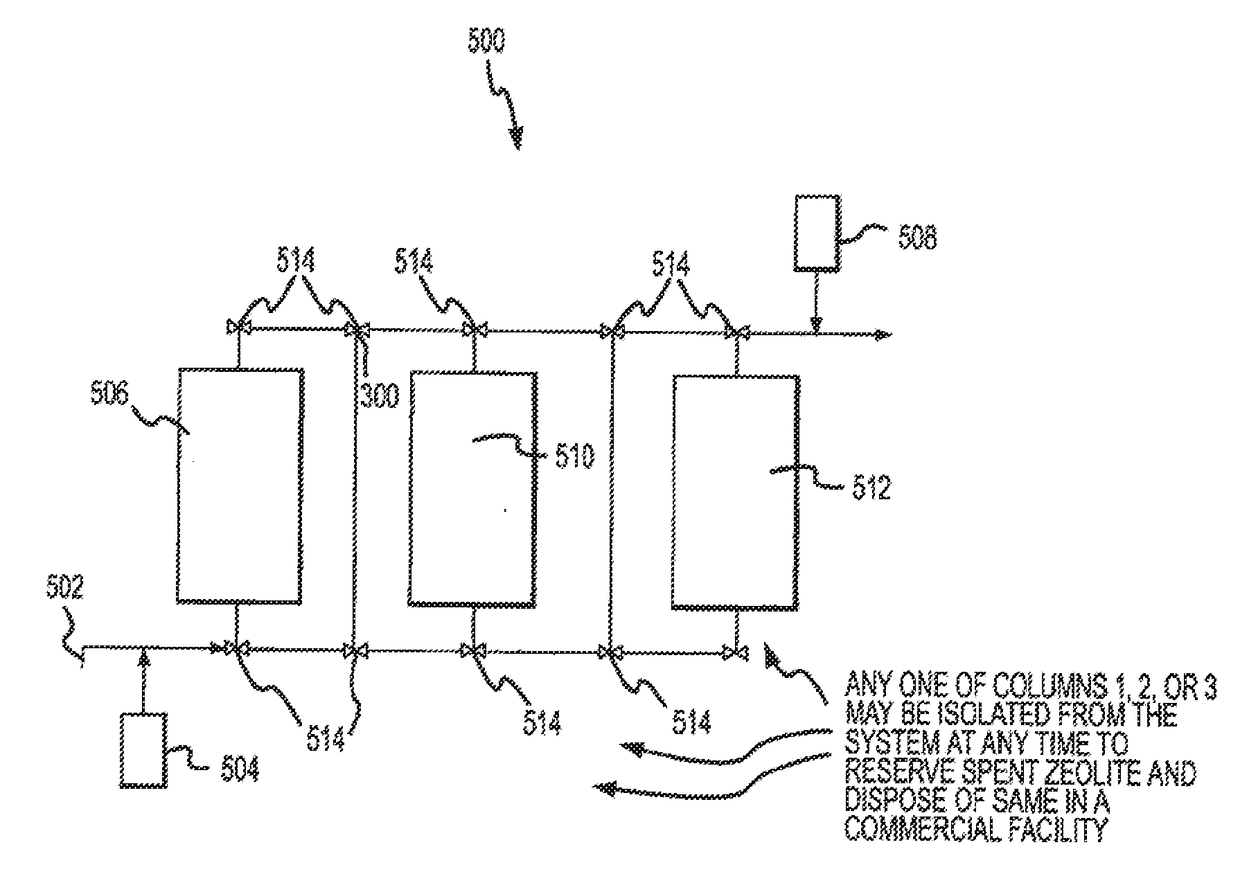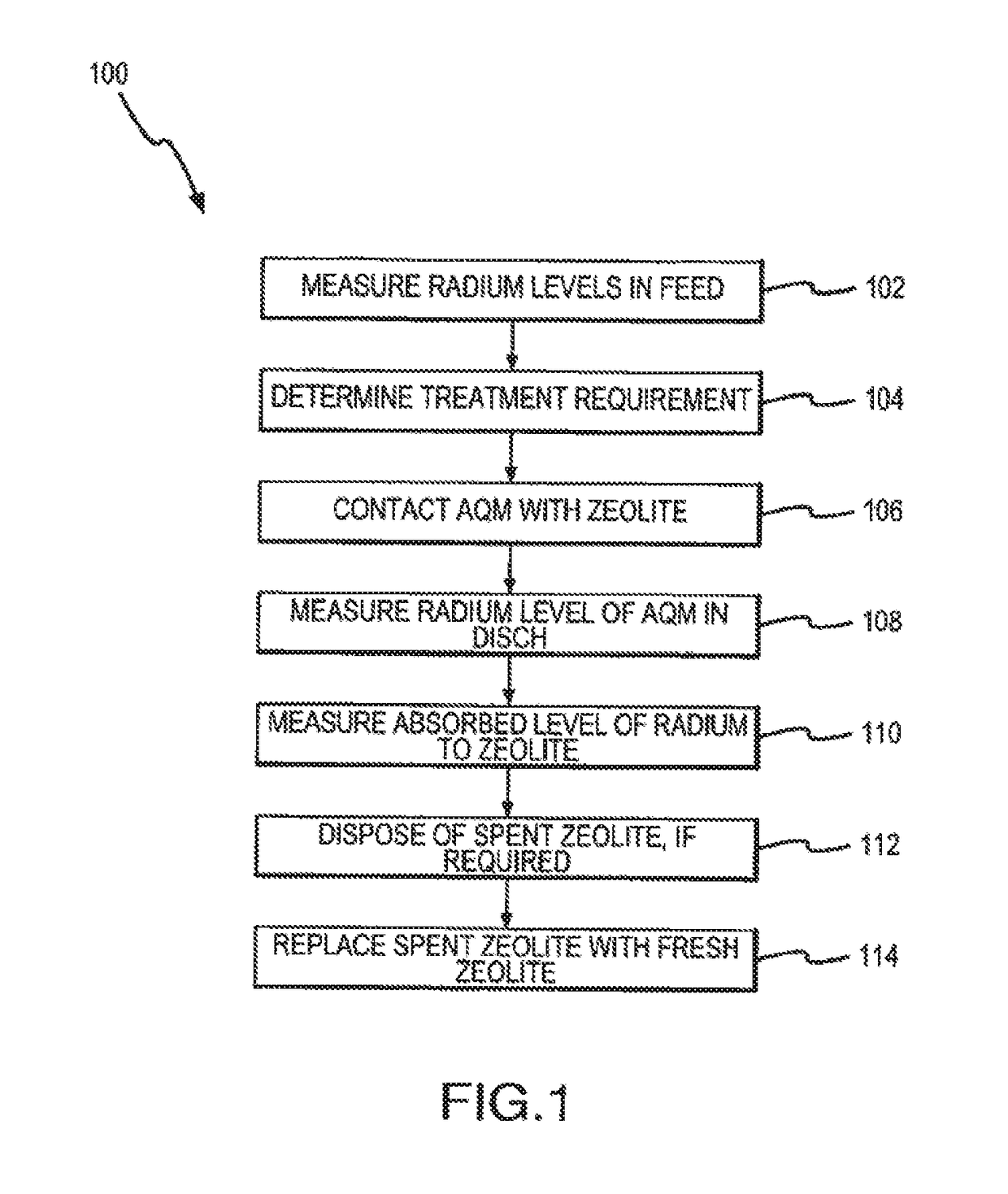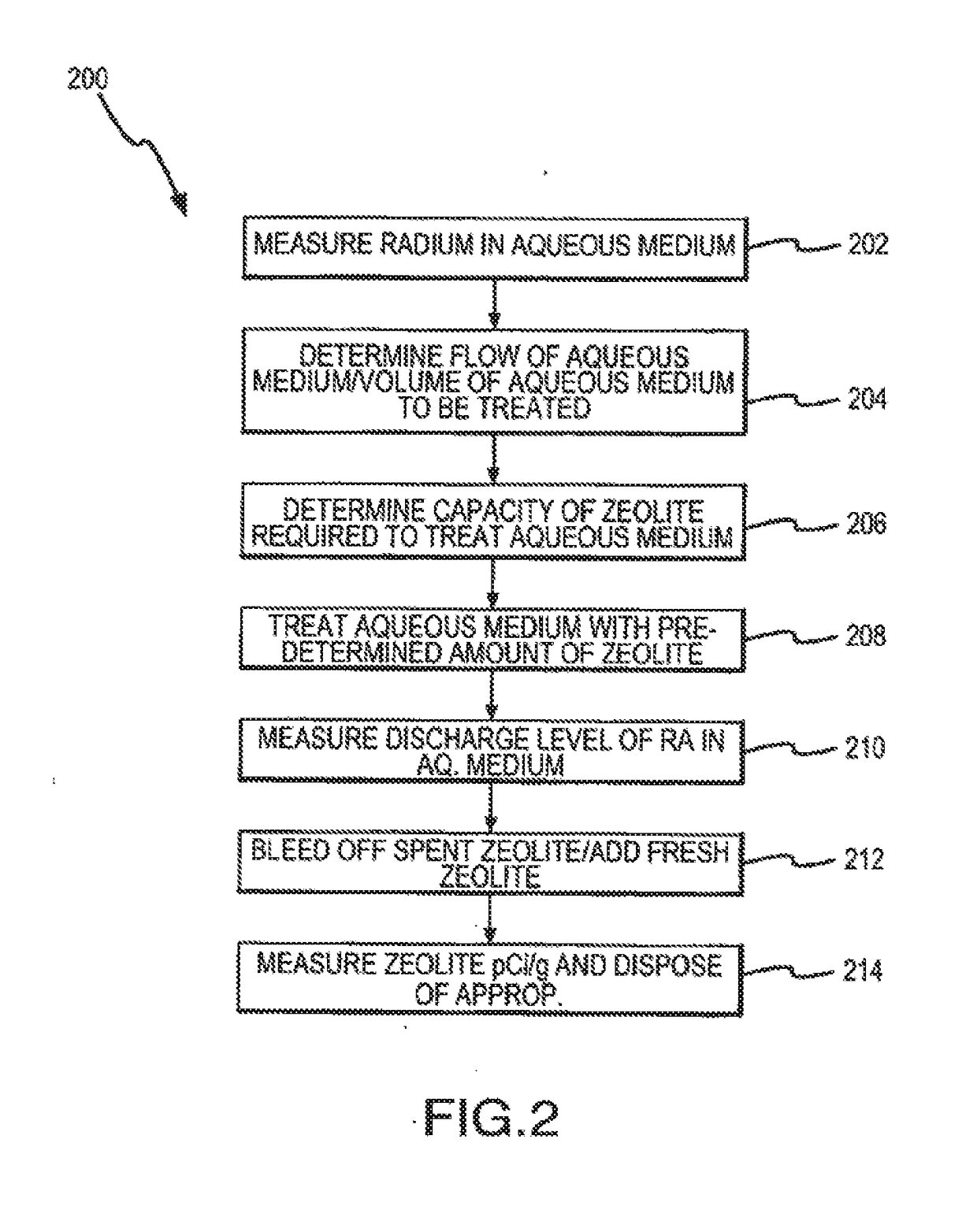Radium Removal from Aqueous Media Using Zeolite Materials
a technology of radium removal and zeolite, which is applied in the direction of radiation-activated contaminants, water/sewage treatment by ion exchange, treatment control/steering, etc., can solve the problems of increasing the pollution of fresh water supplies, limited ability to maximize fresh water use, and relatively expensive ion-exchange resins
- Summary
- Abstract
- Description
- Claims
- Application Information
AI Technical Summary
Benefits of technology
Problems solved by technology
Method used
Image
Examples
example i
ffectively Removes Radium from Aqueous Media
[0074]Radium assay procedures on target samples was performed by Hazen Research, Inc., located at 4501 Indiana St., Golden, Colo. Assays relating to iron, magnesium, calcium, and sodium were performed by Commercial Testing & Engineering Mineral Laboratory, located at 4906 McIntyre St, Golden, Colo., which were in accordance with Environmental Protection Agency protocol number, EPA 6010.
[0075]The results shown below utilized the following generalized protocol: Five hundred grams of zeolite (20×40 mesh) was placed in an adequately sized container. Hot water (approximately 7.5 liters) was added to the container and the mixture mechanically mixed for approximately thirty minutes. The zeolite was then allowed to settle and the water decanted (this removed some of the suspended clays and zeolite fines). A second volume of water was added to the zeolite, remixed and decanted as above. The settled zeolite was removed and dried at a low temperature...
example ii
n be Used to Remove Radium from Aqueous Medium in an Industrial Scale Setting
[0081]The amount of zeolite and the size of the tarik(s) for commercial applications are selected based on numerous design parameters, including but not limited to, average amount of radium in the aqueous medium, desired levels of reduction in concentration of radium, plant capacity, and type of zeolite.
[0082]Predictable scale-up for the methods according to the present invention are described to a theoretical one million gallon per day treatment facility. The zeolite is assumed to be 8×20 mesh clinoptilolite. The aqueous medium is assumed to contain an average of 10 pCi / L in radium (i.e., the first level) and the desired reduction in concentration is 80%, i.e., to a second level (or discharge level) of less than 2 pCi / L. The flow-rate is assumed to be 20 gal / sq.ft.
[0083]A typical scale-up calculation for design of the industrial capacity system for one million gallon discussed above might include, removal ...
example iii
val Pilot Systems
[0085]A test unit having eight 4 inch diameters×4 feet tall columns, loaded with approximately 4 feet zeolite, and in accordance with the present invention, were connected to a source of water having a flow rate of 0.6 to 0.8 gallons per minute, at 10 pounds per square inch (psi). A totalizing flow meter was equipped onto each of the eight columns. Note that two separate pilot systems were utilized, one at Medina, Minn. and the other in Oswego, Ill., and data is shown below for each (Tables 4 and 5). The flow rate was chosen to harmonize with bed expansion, so that the zeolite beds expanded to approximately six inches below the safety screen in each column.
[0086]Samples treated by the pilot system were taken on a schedule as shown below. Note that when samples were obtained from the system, an inline filter was used and the sample lines were purged. Note also that, due to cost efficiency constraints, only specific columns were evaluated over the course of the pilot ...
PUM
| Property | Measurement | Unit |
|---|---|---|
| atomic number | aaaaa | aaaaa |
| concentrations | aaaaa | aaaaa |
| concentration | aaaaa | aaaaa |
Abstract
Description
Claims
Application Information
 Login to View More
Login to View More - R&D
- Intellectual Property
- Life Sciences
- Materials
- Tech Scout
- Unparalleled Data Quality
- Higher Quality Content
- 60% Fewer Hallucinations
Browse by: Latest US Patents, China's latest patents, Technical Efficacy Thesaurus, Application Domain, Technology Topic, Popular Technical Reports.
© 2025 PatSnap. All rights reserved.Legal|Privacy policy|Modern Slavery Act Transparency Statement|Sitemap|About US| Contact US: help@patsnap.com



